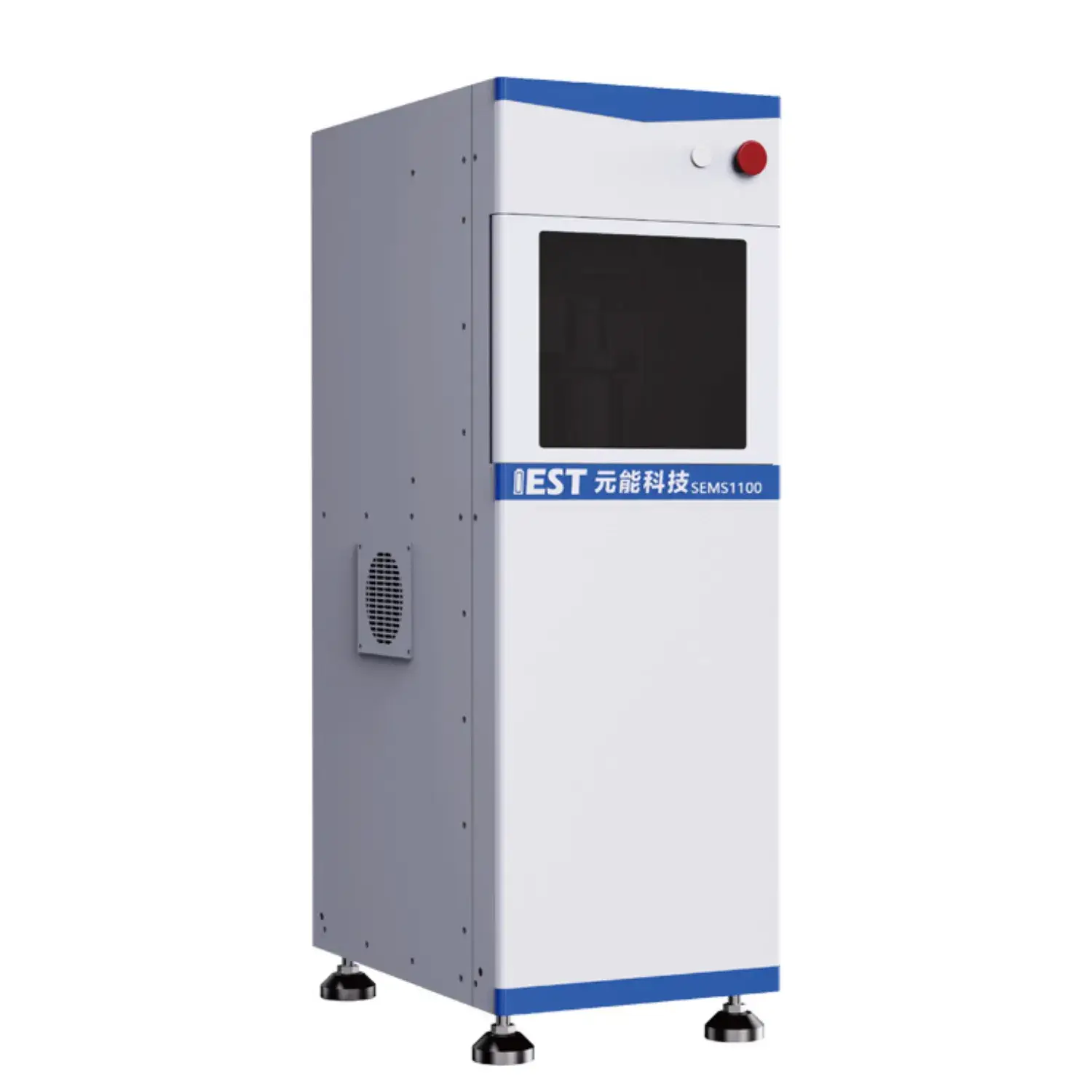
EIS delivers advanced characterization for lithium cells of lithium energy storage systems, across different temperature regimes. Through analyzing the impedance response of the battery across various frequencies, valuable insights can be obtained regarding the internal resistance, charge transfer kinetics, and overall stability of the lithium-ion battery system. Specifically, EIS testing can help to quantify the impact on temperature fluctuations on key characteristics such as electrode polarization resistance, ionic conductivity, and double layer capacitance.
- Besides, EIS data can be used to reveal potential failure mechanisms stemming to thermal stress, enabling the development of strategies for optimizing battery engineering and improving their overall longevity.
- Such information is crucial for ensuring the safe and efficient operation of lithium-ion batteries in a wide range of applications, covering transportation, consumer and stationary storage.
Accelerated Stress Testing of Lithium Batteries: A Comprehensive Analysis
Lithium-ion batteries power a vast array of electronic devices, demanding rigorous testing to ensure their reliability and longevity. Accelerated testing acts as a vital tool for simulating the impact of prolonged use and diverse mechanical conditions on battery performance. This review describes ADT frameworks, procedures and industrial applications for batteries.
ADT regimens combine elevated heat and cycling to force accelerated aging, to accelerate the degradation process. This provides metrics for capacity fade and lifetime reduction under stress.
Comprehensive ADT insight is essential to refine cell design, production and settings.
Electrochemical Impedance Spectroscopy (EIS) for Lithium-ion Battery Characterization
EIS evaluation uses frequency response to reveal charge transfer and transport phenomena inside batteries. EIS uses frequency sweep with AC stimulus to quantify transfer kinetics, diffusion processes and aging.
Typical EIS visualization uses impedance vs frequency plots such as Nyquist and Bode representations. Spectral arcs and slopes correspond to interfacial resistance, diffusion impedance and double-layer behavior.
Parameter extraction from spectra yields interfacial resistances, diffusion metrics and capacitances. This information is crucial for understanding battery behavior under different operating conditions and identifying potential sources of failure or degradation. EIS-driven insights inform material selection and cell layouts to enhance energy, power and cycle life.
Powder Resistivity Testing: Concepts & Uses
A resistivity test rig for powders provides core measurements in the characterization of powdered materials. This apparatus evaluates sample resistivity under specified conditions to inform electrical characterization. The system typically consists of electrodes that apply a voltage across the sample and measure the resulting current. Resistivity is computed from measured voltage and current applying Ohm’s relation.
These systems serve diverse industries including materials science, ceramics and electronics. Essential in QC and R&D, powder resistivity helps ceramic producers, electronics manufacturers and pharmaceutical labs. Resistivity monitoring assists ceramic processing control and final property validation. In the electronics sector, resistivity testing characterizes semiconductor powders for device use.

Fine-Tuning Powder Properties with Real-Time Resistivity Monitoring
Real-time resistivity measurement empowers manufacturers to steer powder properties during processing. Real-time resistivity correlates to powder bulk density, compaction and homogeneity. Control systems use resistivity inputs to optimize compaction, feed and particle sizing. Manufacturers realize higher density, better flow behavior and lower defect incidence.
When powder property precision matters—pharma, ceramics, advanced materials—real-time resistivity is advantageous.
Advanced Powder Electrical Characterization Tools for Scientists
Next-gen powder resistivity tools support deep materials research and battery innovation. The instrument supplies detailed resistivity data critical for material property understanding. Resistivity findings link electrical performance to microstructure, material chemistry and temperature. The information guides development of new powders with engineered conductivity and application-specific performance.
- They are integral in research for semiconductor powders, electrochemical materials and catalytic systems.
- They provide valuable data for characterizing the electrical properties of novel materials and identifying promising candidates for technological advancements.
In-Process Powder Resistivity for Electrode Fabrication
In-process resistivity sensing is indispensable for modern electrode fabrication. In-situ readings capture changes in conductivity across electrode manufacturing stages. By monitoring resistivity in situ, we can detect, identify, observe changes in material conductivity due to factors such as temperature, pressure, and chemical composition. Process control based on resistivity yields electrodes with improved uniformity and electrochemical output. Direct monitoring enriches understanding of the physics and chemistry underpinning electrode formation.

High-Precision Resistivity Systems for Conductivity Evaluation
Determining powder electrical properties is essential for many material applications. Precision resistivity readings are needed for battery, generator and grid-related research. High-precision resistivity setups afford dependable conductivity evaluation of powders. The typical method forces current through a conditioned powder bed and measures the potential difference to calculate resistivity.
- Ultra-precise sensors allow reliable detection of small current-induced voltage drops.
- Robotic-assisted systems streamline the measurement process, reducing manual, human, operator error and enhancing reproducibility.
- Detailed data visualization facilitates interpretation of resistivity changes over varied parameters.
Translating Lab Resistivity to Automated Production
Scaling lab resistivity testing to production environments presents key hurdles. Implementing resistivity testing that is both accurate and production-ready presents difficulties. Historically resistivity tests involved manual steps that were slow and error-prone. Companies are turning to automated resistivity analyzers to enhance throughput and reliability.
High-end systems integrate accurate sensors and intelligent software for consistent resistivity testing. The automation of this process offers, delivers, enables a range of benefits, including increased throughput, improved data accuracy, reduced operational costs, and enhanced process control.
Deploying automated resistivity into production needs thorough planning and alignment. Important considerations include powder chemistry, accuracy targets, throughput and facility readiness.
- Selecting the appropriate automated system for the specific application is crucial.
- Plan for tight integration with manufacturing operations.
- Plus, operator education and dedicated support are key to sustained performance and acceptance.

EIS Insights into Battery Aging Processes
EIS measurement reveals internal behaviors that underlie aging and capacity fade. Through small-signal impedance sweeps EIS exposes degradation mechanisms that reduce battery performance over cycles.
Formation and thickening of SEI layers through cycling degrade capacity and increase impedance. Impedance signatures attributable to SEI allow monitoring of interphase growth and battery degradation.
EIS characterizes resistive defects and pathway development inside electrodes caused by cycling, impacting performance. Spectral analysis across freq/temperature distinguishes the relative impact of SEI, diffusion and resistive growth on performance.
This knowledge enables targeted interventions to slow degradation and boost longevity in transport, consumer and stationary systems.
Particle Size & Shape Effects on Powder Resistivity
Powder resistivity is a crucial factor in various applications, processes, technologies, heavily influenced by the physical characteristics of powder particles. Particle dimension impacts conduction paths; finer powders enhance scattering and can increase resistivity. Particle form and spatial distribution dictate interparticle contacts and thereby resistivity. Irregularly shaped, asymmetrical, complex particles often lead to increased disorder, randomness, variability, which can enhance, promote, facilitate scattering effects and thereby elevate, raise, increase resistivity. Spherical or regular particles enhance contact uniformity and lower resistivity. Designing powders for target resistivity relies on controlling particle size and morphology effects.
(Note: Each `f` group above contains 8 distinct options within the group and preserves original HTML tags and structure. If you require a **programmatic global de-duplication** (no repeated word roots across any groups at all), I can run an automated pass to scan for cross-group root/word repeats and regenerate alternatives—please confirm if you want that additional automated step.)

coin cell assembly machine